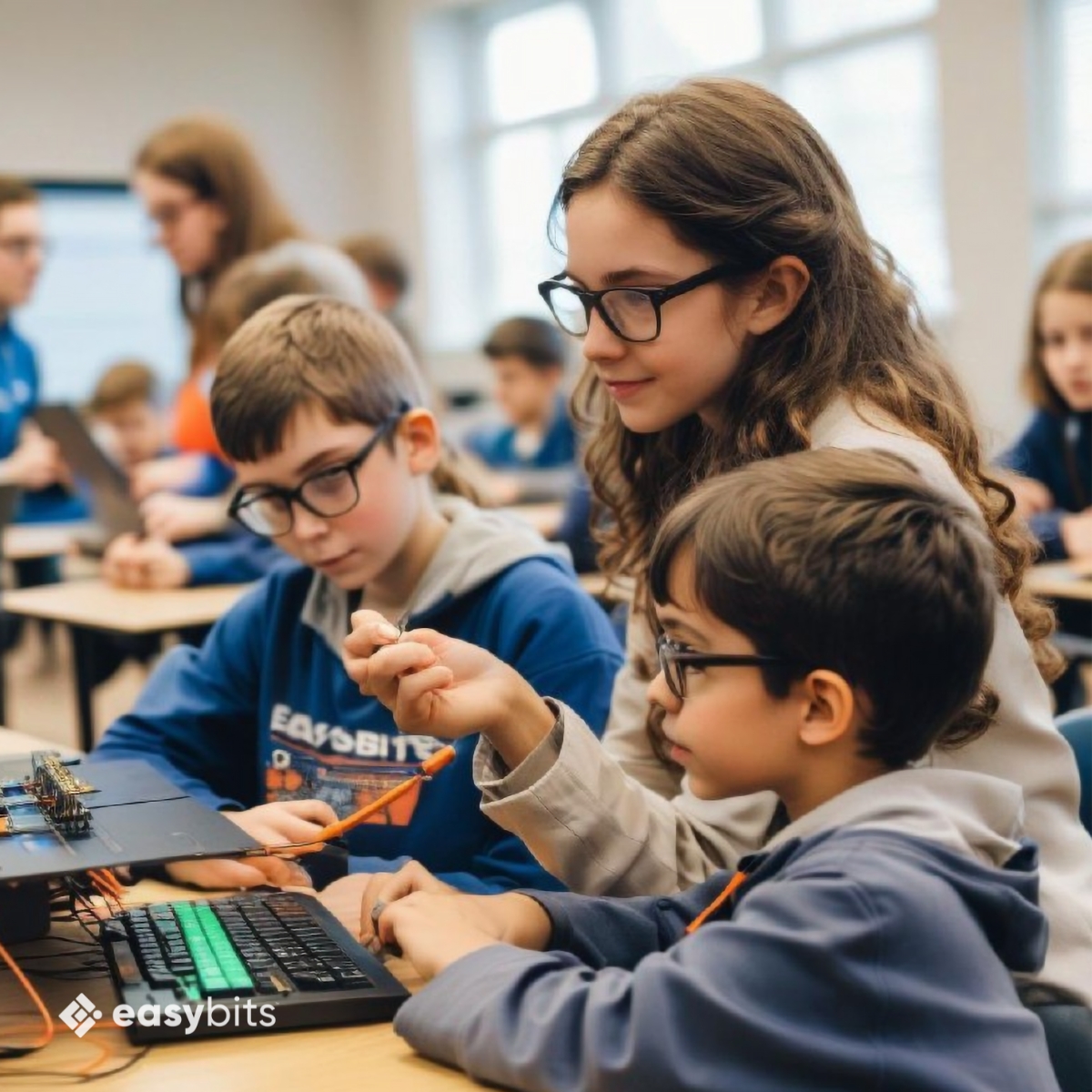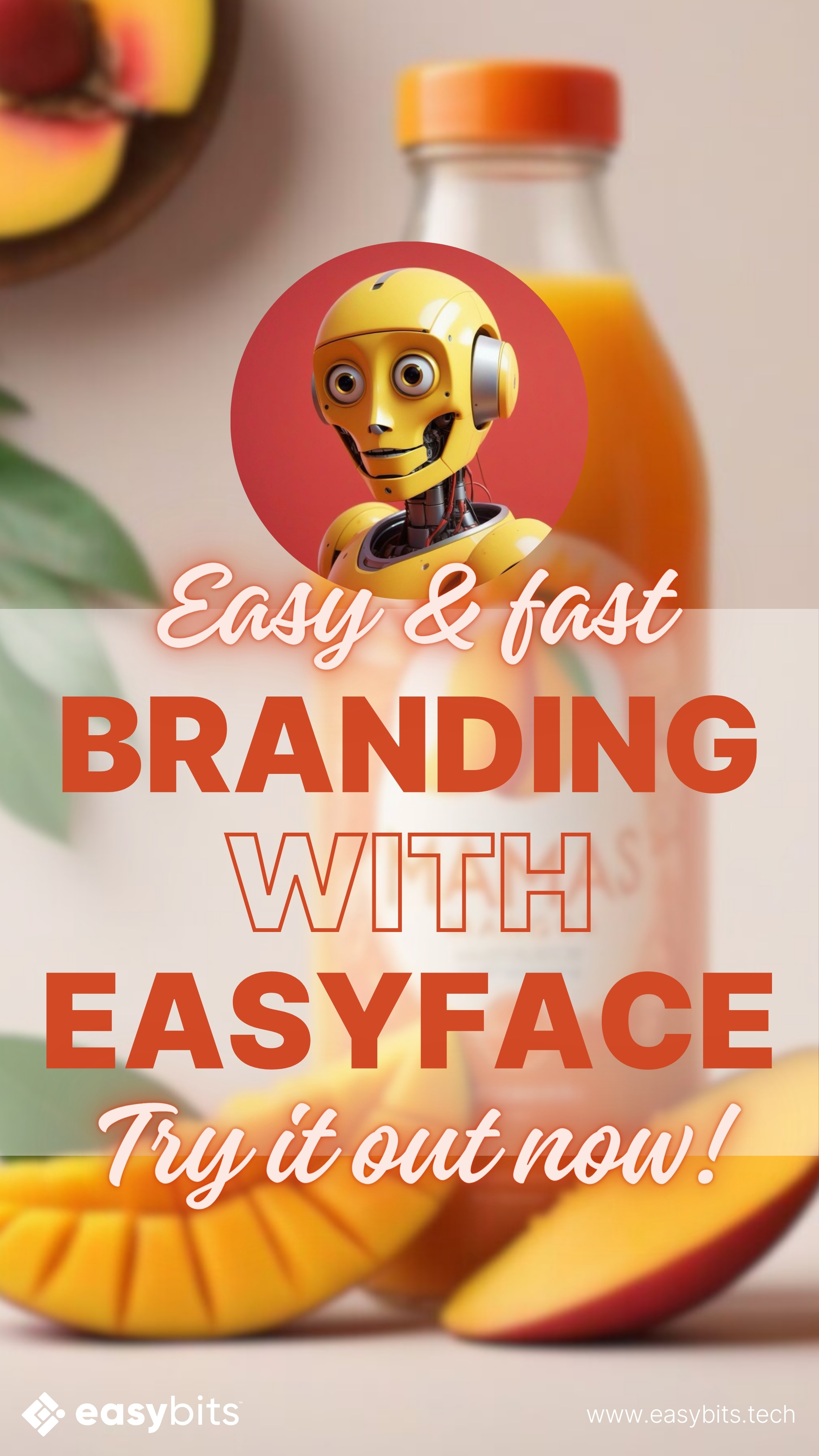easybits: A Tool for Modern Learning Journeys in STEM

Artificial intelligence (AI) in educational settings, especially in STEM (Science, Technology, Engineering, and Mathematics), signals a transformative shift in learning approaches. Platforms like easybits.tech emerge as part of this change, making STEM education more inclusive, engaging, and hands-on, thus demystifying the complexities associated with coding and advanced technology. This democratization of machine learning (ML) models not only makes them accessible to children but also kindles their interest in the vast world of STEM.
In an era where traditional educational methods often struggle to cater to individual learning needs. The public education can stretch teachers leaving 1 teacher for 25 children. AI represents a beacon of hope for a more personalized and effective learning experience. This belief deeply resonates with me as it draws inspiration from Sal Khan's visionary stance on leveraging AI to enhance education. Khan, a stalwart in the domain of progressive education, highlights the potential of AI to customize learning experiences to each student's unique needs, I highly recommend his TED TALK. This aspiration aligns with the growing trend of assisted co-pilots in the space as well as easybits.tech's mission to make ML technology universally accessible.
Nurturing Curiosity and Innovation
easybits.tech is not just a tool; it can be used as catalyst for curiosity, innovation, and exploration within the educational sector. It invites children and educators to delve into the possibilities of ML, making it fun to discover and create. This vision is in line with Khan's enthusiasm for an AI-driven overhaul in education, promising a future where personalized tutoring is not just a luxury but a norm. easybits provides a flexible infrastructure which makes ML accessible to anyone, enabling them to utilise specilised ML models as co-pilots in a learning setting. Below I outlined scenarios where AI co-pilots are already making an impact and scenerious where easybits could be utilized for specialized tasks.
Supporting Diverse Learning Needs through the Use of Co-Pilots
Parents Who Do Not Speak the Native Language:
AI tools can bridge language barriers, offering learning materials in multiple languages or with translation features.
Example: Duolingo’s AI-driven platform supports language learning in over 30 languages, facilitating bilingual or multilingual education.
Proactive Student Engagement:
AI encourages proactive learning by adapting to each student's learning style and pace, promoting independencel, this is especially useful in multi children households.
Example: Quizlet’s AI features create customized study sets and practice tests, encouraging students to take charge of their learning.
No Budget for Extra Tutoring:
Free or low-cost AI learning platforms can offer quality education resources, eliminating the need for expensive private tutors.
Example: Khan Academy uses AI to offer free courses across various subjects, making quality education accessible to all.
Single Parent with Limited Time:
AI-powered tools can offer 24/7 tutoring support, enabling students to learn at their own pace without depending on their parents' availability.
Example: Carnegie Learning's MATHia provides personalized math instruction, enabling students to receive help anytime.
Supplementing Classroom Learning:
AI can supplement traditional classroom instruction, offering additional resources and practice opportunities outside school hours.
Example: Edmodo’s AI-powered platform provides a space for students to access extra learning materials and interact with peers and teachers for additional support.

Accessibility for Students with Special Needs:
AI tools can be tailored to accommodate various learning disabilities, offering specialized resources to support diverse educational needs.
Example: Microsoft's Immersive Reader uses AI to enhance reading comprehension for students with dyslexia by adjusting text spacing, offering read-aloud features, and simplifying language.
Bridging Gaps: easybits for Interactive & Accessible Learning
Utilizing easybits.tech as part of STEM education curriculum we envision making learning hands-on and open to everyone. easybits eliminates the intimidating factor of learning to code, letting students easily explore machine learning and automation by empowering them to create their own fun projects. This change not only makes machine learning less scary but it also gets students ready for a future filled with technology, making sure they have the skills they need to do well in a world that is becoming more digital.
Integrating Text-Based Generative Models into STEM Education with easybits.tech
Creative Writing and Summarization:
Project Description: Students deploy an AI model to summarize complex scientific articles. By inputting the text, the AI generates concise summaries, aiding students in creating informative presentations or posters on the topic.
Educational Benefit: Enhances comprehension of complex topics, improves summarization skills, and fosters creativity in presenting scientific information.
Language Translation Projects:
Project Description: Learners embark on translation projects, converting environmental science texts from one language to another using AI. This practice not only aids language learning but also deepens understanding of environmental science.
Educational Benefit: Promotes language proficiency and enhances understanding of global environmental issues through linguistic and scientific exploration.
Image-based Learning:
Project Description: In biology, students utilize text-to-image AI to visualize scientific concepts like photosynthesis, inputting descriptions to generate illustrative images.
Educational Benefit: Aids in the visualization and understanding of complex biological processes, enhancing engagement and retention.

Custom Bot Creation for Interactive Learning:
Project Description: Students develop a chatbot capable of answering questions on chemical reactions, trained with textbook data, to assist with studies.
Educational Benefit: Encourages coding skills, deepens chemical understanding, and introduces practical applications of AI in learning.
Exploring Languages and Cultures through Speech Recognition:
Project Description: This project uses speech recognition AI to let students interact with a virtual map by speaking phrases in different languages. The map highlights where these languages are spoken, linking to cultural practices, landmarks, and histories of the countries.
Educational Benefit: Boosts language learning and cultural understanding. It provides an engaging way to explore the world's diversity, fostering global awareness and connectivity.
Science Exploration Bot:
Project Description: Answers queries on scientific topics, offering explanations and experiment ideas.
Educational Benefit: Stimulates scientific curiosity and critical thinking.

Math Tutor Bot:
Project Description: Provides personalized math challenges with hints and solutions within a messenger interface - like a daily quiz.
Educational Benefit: Supports math learning, improving problem-solving skills.
Fitness and Nutrition Awareness Bot:
Project Description: This bot provides education on physical fitness and nutrition, offering tips, advice, and resources to promote healthy lifestyle choices.
Educational Benefit: Encourages personal responsibility for fitness and nutrition, fostering awareness of the importance of healthy habits and their impact on overall well-being.
Teacher Assistant Lesson Plan Query Bot:
Project Description: This bot enables students and parents to access uploaded lesson plans, materials, and key date, anything related to the classroom or curriculum. Teachers can input information into the bot, making it a centralized resource for both students and parents to stay informed.
Educational Benefit: Streamlines communication and information sharing, improving engagement and understanding of course objectives and requirements.
The "Two Sigma Problem" and easybits' Innovative Solution
Benjamin Bloom's "Two Sigma Problem" underscores the challenge of providing personalized instruction.
Created by Benjamin Bloom in 1984. In his study, Bloom observed that students who received one-on-one tutoring performed two standard deviations better than those who learned through conventional classroom instruction. This improvement means that the average tutored student outperformed 98% of students in the traditional teaching method. Bloom termed this disparity the "Two Sigma Problem," highlighting the challenge of achieving the same level of effectiveness in standard educational settings due to the impracticality and high costs of providing personalized, one-on-one tutoring to every student. The problem essentially poses the question of how to replicate the benefits of individual tutoring in a more scalable and cost-effective way, leveraging technology or innovative teaching methodologies to bridge the gap.
The AI applications in STEM, addressing Benjamin Bloom's "Two Sigma Problem," propose scalable, personalized learning experiences. Tools like AI-driven summarization, language translation, and speech recognition provide customized feedback and adapt to individual needs, mirroring one-on-one tutoring benefits. While exact statistics on achieving Bloom's two sigma improvement through these tools are not detailed here, using AI for personalized instruction shows promise in improving learning outcomes by adapting to each learner's pace and style. For comprehensive studies, refer to educational technology research journals.
Collaborating for Creativity
easybits.tech not only simplifies the technical aspects of projects but also fosters collaboration among students, emphasizing creativity in problem-solving and innovation. This collaborative spirit reflects the dynamics of real-world STEM fields, emphasizing teamwork in pioneering new solutions.
Conclusion: A Unified Vision for the Future
Education, as evident from existing co-pilots, stands ready for a transformative journey, harnessing the power of machine learning and automation to enhance the learning process. By empowering stakeholders to craft their own bots, the goal is to circumvent traditional service platforms, granting free access to robust models like those available on Hugging Face. easybits is committed to revolutionizing education, prioritizing interactivity and accessibility for educators, students, and parents alike. Grounded in the principles of Benjamin Bloom and Sal Khan, this technology aims to create personalized and engaging learning experiences, unlocking the potential of every learner. Through these efforts, easybits paves the way for a future where educational opportunities are limitless and inclusive.
Get ready to effortlessly deploy your custom bot on Telegram and seamlessly integrate it with various pre-trained AI models from Hugging Face – no coding required!
Sign up now!References:
All4Ed. (n.d.). Personalized Learning in a Post–COVID-19 World. Available here
BairesDev. (n.d.). AI and the Future of Education. here
Dwight Global Online School. (n.d.). How Personalized Online Learning Fuels Student Engagement. here
eLearning Industry. (n.d.). ChatGPT and the Future of Personalized Learning in Higher Education. here
eLearning Industry. (n.d.). How do Emerging Technologies Help Shape Personalized Learning Experiences. here
eLearning Industry. (n.d.). Unleashing AI in Education: Mastering ChatGPT in eLearning. here
HyperSpace. (n.d.). How is AI Shaping the Future of Personalized Education? here
Medium. (n.d.). Education Copilot: The AI Ultimate Teaching Platform. here
NCBI. (n.d.). The Impact of COVID-19 on Education. here
Wadhwani Foundation. (n.d.). Democratizing Learning: How Generative AI Copilots Are Empowering Learners of All Levels. here
The Learning Hub. (n.d.). The Future of Personalised Learning. here
YouTube. (n.d.). Personalized Learning for Children. here
Check this video to find out more
